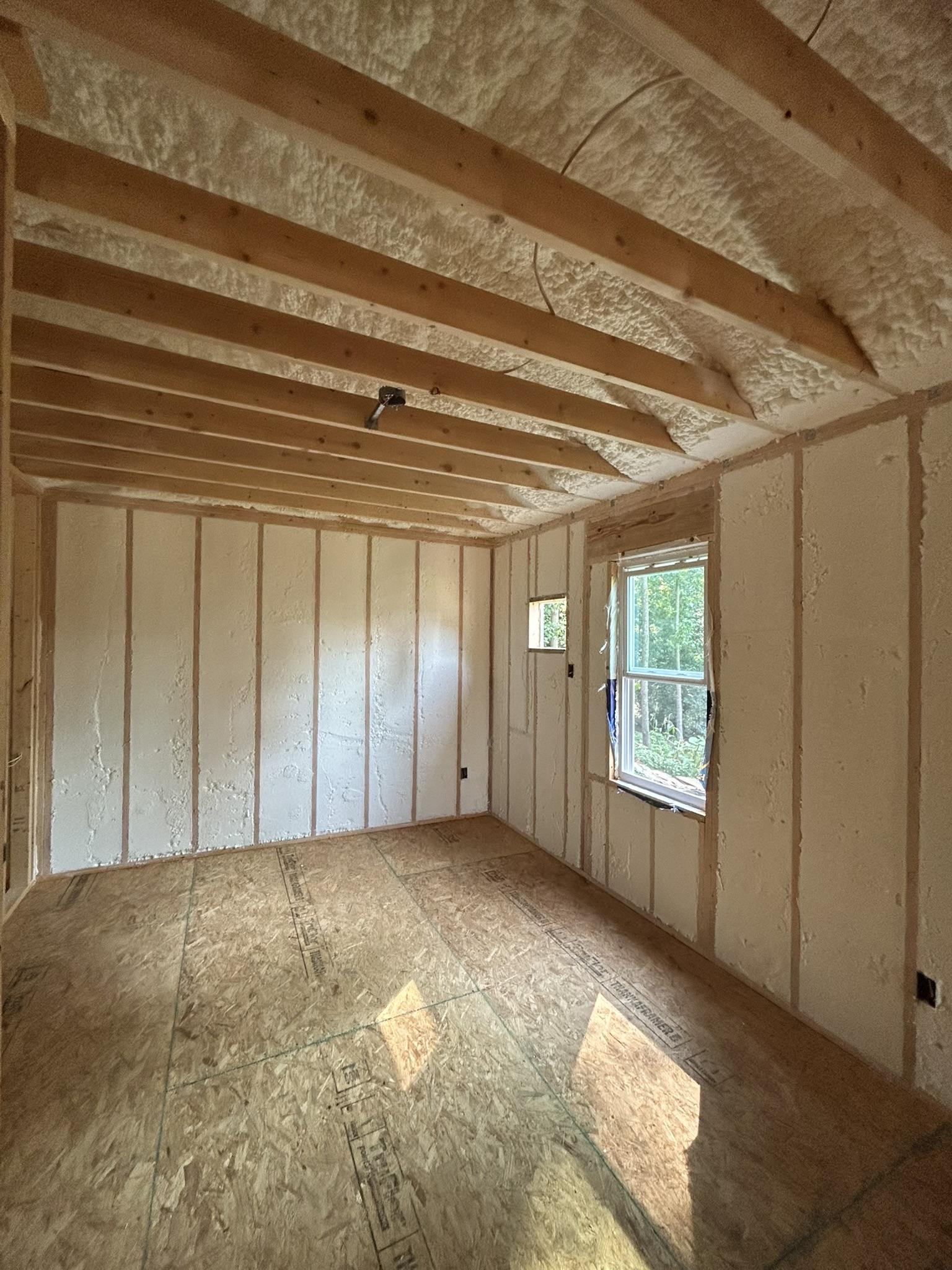A Comprehensive Guide to Insulation in North Carolina: Climate, Materials, and Best Practices

Insulation is one of the most critical components of any residential or commercial building, directly influencing energy efficiency, indoor comfort, and long-term maintenance costs. In a diverse state like North Carolina, where climate zones range from the Appalachian Mountains in the west to the Atlantic coastal plain in the east, choosing the right insulation method and material is not a one-size-fits-all approach. This article provides an in-depth look at insulation North Carolina, focusing on the state’s climate, suitable insulation types, regional considerations, energy codes, and installation best practices.
Understanding North Carolina’s Climate and Its Impact on Insulation
North Carolina encompasses multiple climate zones, including humid subtropical conditions in the east and continental climates in the higher elevations to the west. Summer temperatures can exceed 90°F in many parts of the state, while winters are relatively mild but still require effective insulation to retain indoor heat.
Key climatic challenges impacting insulation in North Carolina include:
High humidity: Especially along the coast and in central areas like Raleigh and Charlotte, making moisture control essential.
Temperature variability: In mountain regions, winter insulation performance is a top priority, while coastal regions may focus more on cooling efficiency.
Seasonal storms and rainfall: Reinforcing the importance of moisture-resistant materials, especially in crawl spaces and attics.
Effective insulation must not only resist heat transfer but also act as a barrier against moisture, air leaks, and in some areas, even pests.
Common Types of Insulation Used in North Carolina
- Fiberglass Insulation
One of the most widely used insulation types, fiberglass comes in batts or loose-fill form. It is suitable for wall cavities, attics, and floors. While it is cost-effective and easy to install, it must be kept dry to maintain its thermal performance.
- Spray Foam Insulation
Ideal for sealing air leaks and insulating hard-to-reach spaces, spray foam (open-cell or closed-cell) is particularly useful in humid areas of North Carolina. It provides high R-values and excellent moisture resistance, especially in crawl spaces and basements.
- Cellulose Insulation
Made from recycled paper, cellulose is an eco-friendly option with good soundproofing qualities. It is commonly blown into attics or wall cavities and treated to be fire- and pest-resistant.
- Rigid Foam Board
Often used in foundation walls or exterior insulation applications, rigid foam boards provide a high insulating value per inch and are resistant to moisture. They are suitable for both residential and commercial applications across the state.
- Mineral Wool
Also known as rock wool, this material is fire-resistant and provides good thermal and acoustic insulation. It’s increasingly used in new construction and renovation projects in North Carolina, especially in multi-family buildings and areas with noise concerns.
Regional Considerations for Insulation in North Carolina
Western North Carolina (Appalachian Region)
Climate: Cooler temperatures and more snowfall in winter.
Insulation priority: High R-value materials in attics, walls, and basements.
Recommendation: Closed-cell spray foam or fiberglass with vapor barriers; attention to air sealing.
Central North Carolina (Piedmont Region)
Climate: Moderate seasonal variation with high summer humidity.
Insulation priority: Balancing heating and cooling efficiency.
Recommendation: Open-cell spray foam, fiberglass batts with air sealing, and vapor retarders in humid areas.
Eastern North Carolina (Coastal Plain)
Climate: Hot summers, mild winters, and high humidity.
Insulation priority: Moisture control and heat resistance.
Recommendation: Closed-cell spray foam in crawl spaces, cellulose or fiberglass in attics, and rigid foam for foundation walls.
Energy Codes and Standards in North Carolina
North Carolina adheres to its own version of the International Energy Conservation Code (IECC), updated periodically to ensure homes and commercial buildings meet efficiency standards. Some relevant requirements include:
Prescribed R-values: Vary based on climate zone and building component. For instance, attic insulation typically requires R-38 or higher.
Air sealing: New construction must meet air tightness levels verified through blower door testing.
Duct sealing: HVAC ducts must be sealed and tested for leakage.
Crawl space insulation: Either vented with floor insulation or sealed with wall insulation and a vapor barrier.
Understanding these codes is essential for both new construction and major renovation projects across North Carolina.
The Role of Crawl Spaces and Attics in North Carolina Homes
In many North Carolina homes, crawl spaces and attics play a vital role in overall energy performance. These areas are particularly vulnerable to moisture and air infiltration, especially in the humid east.
Crawl Spaces
Vented crawl spaces can draw in moist air, leading to condensation and mold.
Encapsulation with spray foam or rigid board insulation, combined with a vapor barrier, helps mitigate moisture issues.
Attics
High temperatures and solar gain during summer months necessitate reflective barriers and proper ventilation.
Insulating the attic floor with cellulose or fiberglass is common; in conditioned attics, spray foam under the roof deck may be used.
Signs That Insulation Needs Upgrading
Insulation in North Carolina homes can degrade over time due to moisture, pests, or shifting structures. Homeowners should be aware of signs that suggest an upgrade is needed:
Uneven indoor temperatures
Increased energy bills
Drafts or cold spots
Mold or mildew in walls and ceilings
Pest infestations in attic or crawl space insulation
Regular inspections and energy audits can help identify insulation problems early.
Environmental and Financial Benefits of Proper Insulation
Effective insulation contributes to several broader goals:
Lower energy consumption: Reduced demand for heating and cooling systems.
Improved indoor air quality: Sealed insulation systems prevent the ingress of outdoor allergens and pollutants.
Soundproofing: Particularly important in urban or suburban settings.
Increased property value: Energy-efficient homes are more attractive to buyers.
Environmental impact: Reduced greenhouse gas emissions through lower energy use.
Rebates and incentives may also be available through local utility providers or state programs for energy-efficient insulation upgrades.
Insulation and Sustainable Building in North Carolina
Sustainability initiatives across North Carolina increasingly prioritize efficient building practices. LEED-certified buildings, green home programs, and passive house designs all place insulation at the forefront of energy and environmental strategy.
Materials like cellulose (from recycled paper) and mineral wool (from natural rock) are gaining traction for their environmental credentials. Meanwhile, advances in spray foam chemistry are reducing the environmental footprint of installation processes.
Choosing the Right Insulation Strategy
Selecting the ideal insulation solution in North Carolina requires balancing:
Climate zone and weather conditions
Existing building structure
Moisture risks and ventilation
Budget and energy goals
Code compliance and environmental impact
Professional guidance and thorough assessments are often necessary for complex or large-scale projects, especially when transitioning to high-performance energy standards.
Conclusion
The topic of insulation in North Carolina encompasses more than just thermal resistance; it reflects a broader consideration of regional climate, material performance, building codes, and sustainability. From the cooler mountain areas to the humid coastal plains, each region presents its own challenges and requirements for effective insulation.
Homeowners, builders, and developers across the state benefit from a strategic, informed approach to insulation—one that not only meets current energy efficiency standards but also ensures long-term comfort, durability, and cost-effectiveness. As North Carolina continues to grow and modernize its building infrastructure, proper insulation will remain a cornerstone of smart, sustainable construction.







